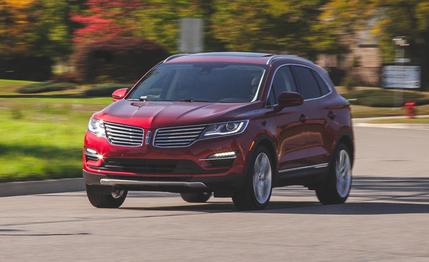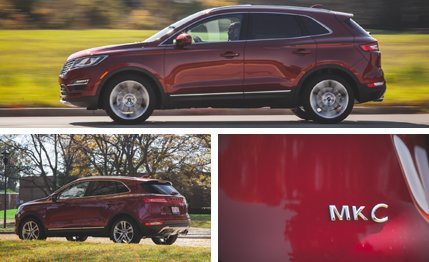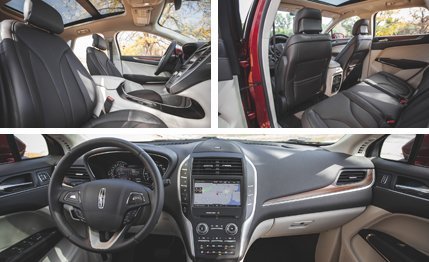
 Instrumented Test
Instrumented Test
A decade from now, automotive gods willing and if everything goes according to plan, we might recognize this MKC as Lincoln’s great escape. That’s escape with a lowercase “e.” Because while the MKC is based on the Ford Escape, Lincoln has finally, gently broken free from its reputation for building overpriced, reskinned Fords. The rudderless luxury brand appears to be gradually learning the fine art of parts sharing that has been so successful for brands like Volkswagen and Audi.
Inside and out, the MKC makes very few overt references to the Escape, but the most meaningful distinction can be found in the driving experience. Whereas Lincolns past offered a softer, less controlled variation on a Ford’s typically competent dynamics, the MKC delivers the comfort and confidence expected of a luxury vehicle. The cabin is quiet and the ride compliant, yet at the same time, the nicely weighted steering is slack-free and the body control is firmly in check. The top engine, a 2.3-liter turbocharged four-cylinder shared with the Ford Mustang, is quiet and well-behaved in meting out its 285 horsepower and 305 lb-ft of torque.


Lincoln still has its work cut out, though. Both Detroit luxury brands, Cadillac and Lincoln, continue to struggle with understanding how to do premium inside of a car. In the MKC, the leather isn’t as rich nor are the seats as supportive as in competitors. And the gear-selector push buttons operate with the same sense of occasion as activating the rear defroster. These nuances wouldn’t be such a big deal if Lincoln were aiming for the low end of the luxury market, targeting Buick and Acura, but the $49,265 sticker price of our test car suggests Dearborn has its sights set far higher.
What this Lincoln won’t be remembered for is anything approaching sportiness. The Lincoln MKC is upscale in the Lexus sense, not the BMW or Audi variety. The 2.3-liter four-cylinder, an $1140 upgrade over the base 2.0-liter turbo and available only with four-wheel drive, is slow to rev and not particularly punchy. In our testing, the MKC needed 6.6 seconds to reach 60 mph and 15.2 seconds to clear the quarter-mile. That performance puts the MKC in the hunt with the German contingent, but only with their base turbocharged four-cylinder engines. A turbocharged six-cylinder BMW X3 xDrive35i with only a 15-hp advantage on the 2.3-liter Lincoln will run to 60 mph a full second quicker.


Around the skidpad, the MKC mustered 0.83 g of lateral grip, slightly below par for this segment. A 70-to-0-mph braking distance of 168 feet is right in line with what we expect from these compact crossovers. However, after the fourth panic stop, the left pedal became mushy as heat saturated the system from repeatedly reining in 4066 pounds of Lincoln.
The MKC’s handsome appearance and well-sorted driving characteristics are only the first step in the long, arduous journey Lincoln faces if it’s going to make the transformation to a proper luxury brand. There’s still plenty of room for improvement, and we fully expect those gains to materialize in future models. The MKC may mark a great escape from the status quo, but Lincoln’s future depends on what the company makes of its newfound freedom.